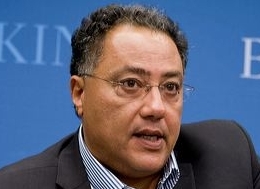
Poverty in the Middle East and North Africa (MENA) is largely a rural phenomenon. Rural poverty in Mauritania and Morocco is about three times higher than urban poverty, while in Egypt and Tunisia it is twice as high. It is not surprising that the Arab Spring started in Sidi Bouzid, a poor rural area in Tunisia.
In 2010, the average unemployment rate for university graduates in Sidi Bouzid was around 40 percent. The only jobs available were for seasonal, low-paid farm laborers. Young people were also unable to start a farming business because they lacked the financial resources to do so and had no access to land.
Table 1: Relative Importance of Holdings of less than 5 Hectares  Source: FAO, Agriculture Census Data, different years
Source: FAO, Agriculture Census Data, different years
Most of the poor rural people in MENA are small family farmers. Table 1 shows the relative importance of small family farms (less than 5 hectares) in a sample of MENA countries for which data was available. About 84 percent of all agricultural holdings are under family farming. The table also shows that small family farms only control about 25 percent of the cultivated area. This reflects the dualistic nature of agriculture in the MENA, where large numbers of family farms operate alongside big and more modern entities.
Family farming is an important employer and source of income in MENA. Table 2 shows that about 12.5 percent of the MENA’s population works on family farms. It was not possible to make a comparison with the size of the labor force, because labor force data often does not include all unpaid family workers which could bias the results. Notwithstanding technical issues, the data clearly shows that a large number of people are working on family farms across MENA, making family farming a major source of household income.
Table 2: Role of Family Farming in Creating Employment  Source: FAO, Agriculture Census Data, different years
Source: FAO, Agriculture Census Data, different years
The average size of a family farm in MENA is very small ranging from 2.2 hectares in Tunisia all the way down to 0.6 hectares in Yemen (Figure 1 below). This could explain why policymakers seem to ignore the needs of those smallholders and focus more on large modern farms. Since there are economies of scale in access to technology, inputs, financing, and to output markets this could also explain why smallholders in MENA have low productivity and are unable to sell to national or international markets. Problems caused by the large number of very small dispersed family farms in MENA could be tackled through the development of strong and independent producer organizations that group farmers together.
Figure 1: Average Size of Family Farms in Hectares  Source: FAO Agriculture Census Data, different years
Source: FAO Agriculture Census Data, different years
MENA is characterized by a multiplicity of weak farmer organizations that are highly dependent on governments. In several countries the statutes place producer, and other civil society organizations, under the administrative supervision and authority of the government. Thus their autonomy and ability to operate in support of family farmers is restricted. Moreover, farmer organizations are usually heavily dependent on government budgets for financial support, which further erodes their independence and limits their areas of action. In fact, farmer organizations sometimes act more as government agencies, informing farmers of policy decisions that are taken at the central level and helping implement them, rather than as bodies that represent farmers and advocate for policies that protect their interests.
Effective farmer organizations could play an important political role. Smallholder and family farmers do not feel that their voices are being heard in policy circles. The lack of strong organizations representing family farmers, together with their low level of political participation, may explain why development strategies and policies tend to be biased in favor of urban activities and large modern agriculture.
Farmer organizations and cooperatives could also play an important economic role, grouping family farmers together to enhance their access to technology and inputs, and to improve market access and help them retain a larger share of value added. Farmer organizations could encourage the exchange of experience and know-how between farmers. They could also propose and encourage programs for applied agricultural research that support family farmers, and help improve extension services and adapt them to the needs of family farmers. In fact, civil society organizations including farmer organizations and cooperatives are often much better placed than government agencies to deliver extension and technical support to smallholder and family farmers.
In conclusion, improving the lot of smallholder and family farmers, who represent the vast majority of the poor, is necessary for achieving inclusive growth and social justice in MENA. Smallholders need to have a voice in policy matters affecting agriculture, and they need to work together to benefit from economies of scale in access to technology and inputs as well as in marketing, and to enhance their share of value added. Strong and independent farmer organizations could play a political role, making sure that smallholder concerns are taken into account by policymakers, as well as an economic role of organizing smallholders to improve access to technology and markets. Ultimately, the development of those organizations could help achieve greater inclusion and social justice.
